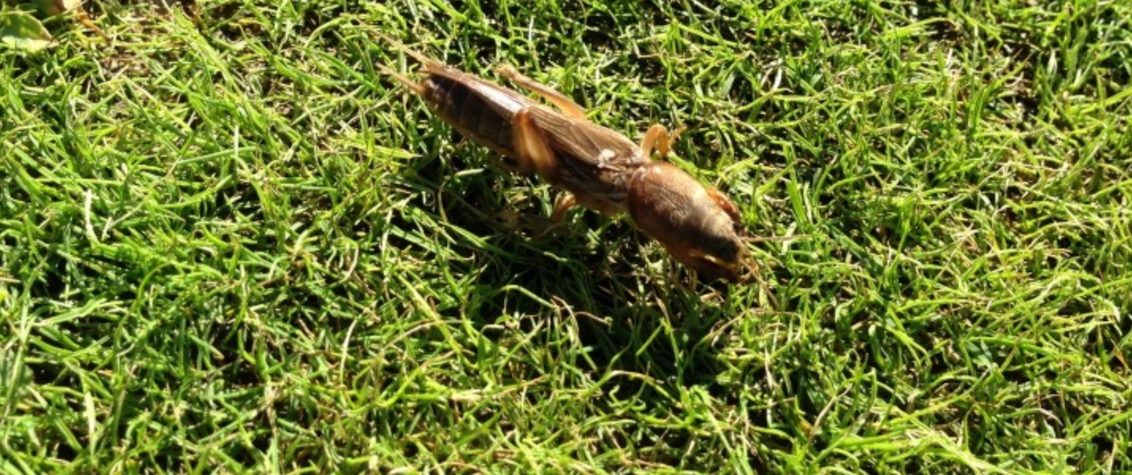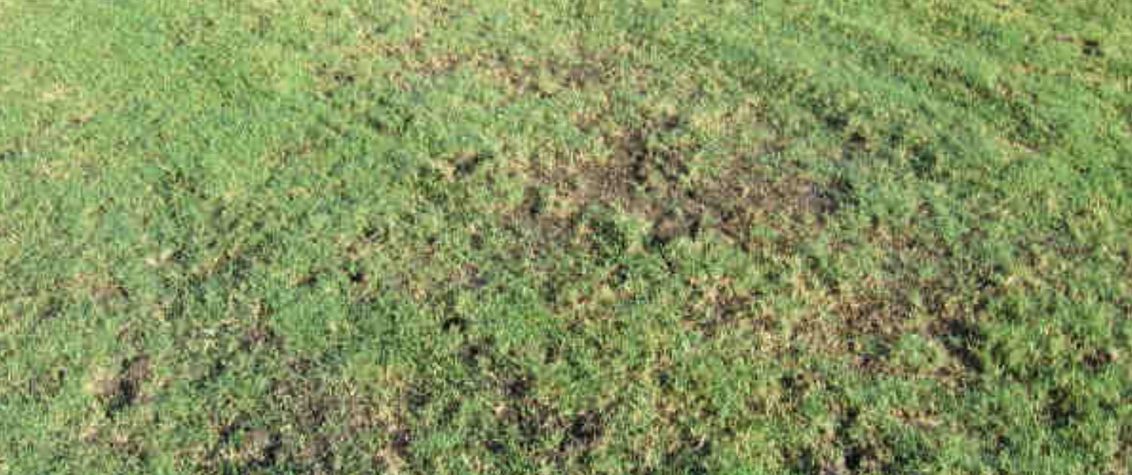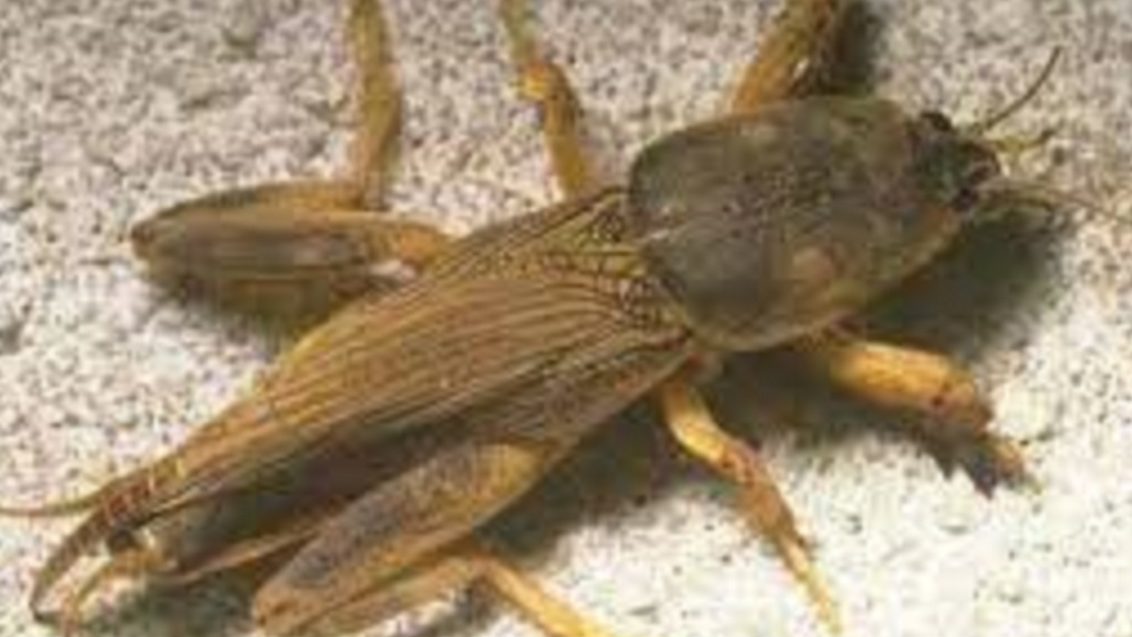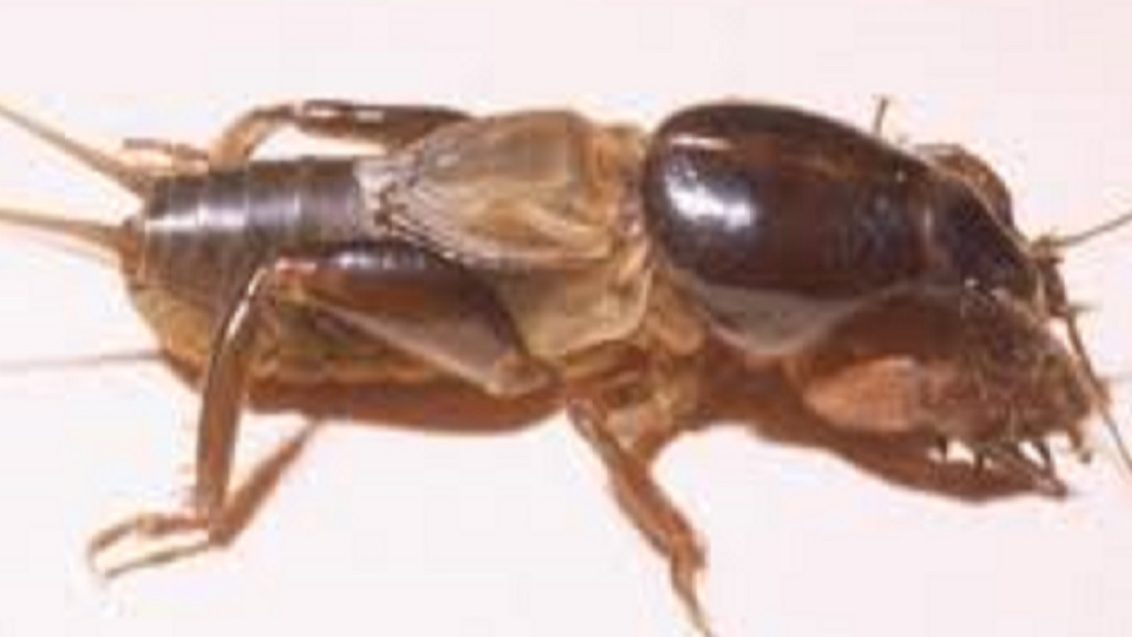Mole Crickets
Turf Pest
Mole Crickets can infest turfgrass and create problems for turf development and turf quality. Most of the damage normally occurs below the soil surface in the root zone, but can occur also above the soil surface, where the insects feed on the leaves. Left unttreated, mole crickets can become very destructive to turf.
Identifying Mole Crickets
These insects can be recognized by their gray-brown, velvety bodies and wide spade-like front legs, which are well adapted for digging. Adult mole crickets are about an inch to inch and a quarter in length with wings. The nymphs, or immature mole crickets, are similar looking but are smaller and have no wings.
See more on Mole Cricket ID here
Symptoms
Mole crickets can be pests in certain crops and turf grass (home lawns, golf courses etc). Damage is caused by direct root feeding and the burrowing activity that destroys the plant root system.
Mole crickets feed on small soil insects as well as plant roots and shoots. Some species are extremely damaging to turf especially in warm climates.
Their damage can be recognized by irregularly raised burrows and dying grass.
These insects are often attracted to turf that has an abundance of thatch—a thick, spongy mat of runners and undecomposed grass clippings on the soil surface. Improper mowing and excessive water or fertilizer can lead to this condition. Mole crickets find this to be a suitable habitat and will eventually overwinter within deep burrows, which are created by their extensive digging. Once the soil warms up in spring, they will work their way up to the surface to feed on turf, usually at night. This feeding also takes place in the upper inch or so of soil. Females will begin laying eggs just beneath the soil surface in spring and early summer, with hatching coming shortly thereafter. The nymphs will then develop during summer with damage seen by mid to late July.

Mole Cricket damage
Integrated Turf Management
Effective mole cricket control depends on the season and current life stage of the pest. Overwintered mole crickets become active in early spring. While treatment during this time reduces tunneling damage, it may not be as effective as later treatment. Summer treatment is more effective on the vulnerable nymphs. By the time damage is clearly visible, control is more difficult. To check for mole crickets early in the season or the presence of young nymphs, you can flush them out with soapy water—about two tablespoons of dishwashing liquid to one gallon of water. Pour the soapy water over a 1 to 2 square foot area. Do this early in the morning or late evening. If mole crickets are present, they will surface within minutes. If at least two to four mole crickets surface, then target the area for treatment in summer. Irrigate well after applying the soapy water.
Meridian is mainly positioned in the "below surface" insect problems, providing both contact and ingestion activity.
If treated preventatively, the insects stop feeding within hours leading to minimal turf damage. Death occurs quickly, usually within 24 - 48 hours.
The product is most active in early development stages of the grubs and mole crickets. Alternative chemistry should be used for the adult stages.
Click below for more information on mole crickets
Learn more about Mole Cricket anatomy and lifecycle here
Learn about Mole Cricket control here



